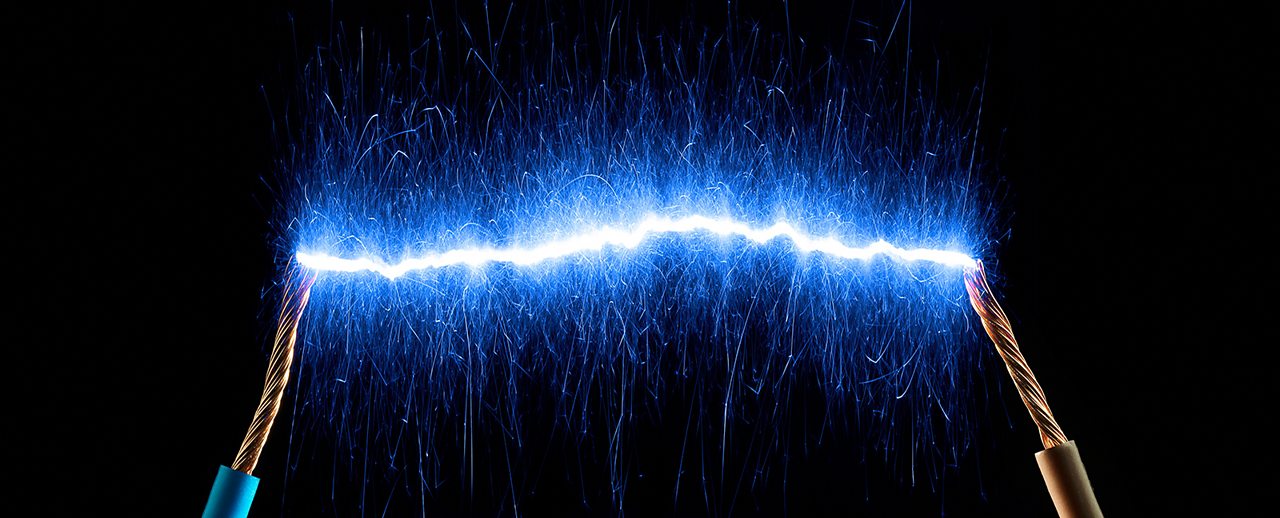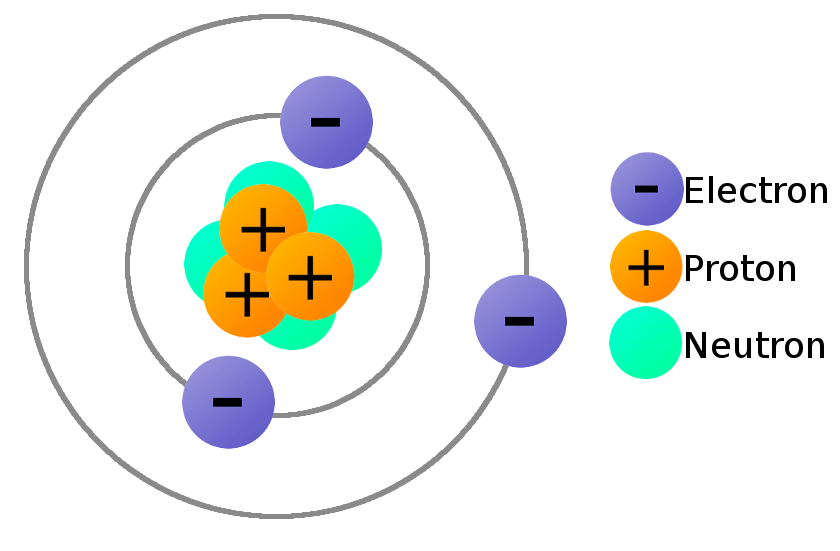എന്താണ് ഇലെക്ട്രിസിറ്റി ??
There
are some inventions which charged the human civilization. The first invention
was the wheel, the second invention was electricity, the third invention was telecommunication,
and the fourth invention was the computer. We will discuss here the basic introduction
of electricity.
Each substance in this universe is made of plenty of atoms and
each atom has the same number of negative electrons and positive protons. As a
result, we can say that each neutral substance has the same number of electrons
and protons in it. The protons are immovable and strongly attached to the
nucleus of the atoms. Electrons are also bounded to atoms and orbiting around
the nucleus in different distinct levels. But some of the electrons can move
freely or can come out from their orbit due to external influences. These free
and as well as loosely bonded electrons cause electricity.
In
neutral condition, the number of electrons and protons is the same in any piece
of substance. But if somehow the number of electrons in a substance becomes
more than the number of protons, the substance becomes negatively charged as
the net charge of each electron is negative. If the number of electrons in a
substance becomes less than the number of protons, the substance becomes
positively charged.
 The
concentration of free electrons always tries to be uniform. This is the only
reason for electricity. Let us explain in detail. If two dissimilarly charged
conductive bodies come in contact, the electrons from the body of higher
electron concentration will move to the body of lower electron concentration to
balance the electron concentration of both bodies. This movement of charge (as
electrons are charged particles) is electricity.
The
concentration of free electrons always tries to be uniform. This is the only
reason for electricity. Let us explain in detail. If two dissimilarly charged
conductive bodies come in contact, the electrons from the body of higher
electron concentration will move to the body of lower electron concentration to
balance the electron concentration of both bodies. This movement of charge (as
electrons are charged particles) is electricity.
The
related terms in electricity
1.
Electric Charge: As we told
earlier that the number of electrons and number of protons are equal in a
neutral body. The amount of negative charge and positive change is also equal
in a neutral body since the electric charge of an electron and a
proton is numerically equal but their polarity is opposite. But for any reason,
the balance of the number of electrons and protons in a body gets distributed
the body becomes electrically charged. If the number of electrons more than
that of protons the body becomes negatively charged and the amount of charge
depends on the number of excess electrons in the body. In the same manner, we
can explain the positive change of a body. Here the number of electrons becomes
lesser than that of protons. The positivity of the body depends on the
difference between protons and electrons in the body.

2.
Electric Current: When charge
flows from one point to another to make uniform charge distribution then the
rate at which the charge is flowing called electric current. This rate
mainly depends on the difference between the charged condition of two points
and the conditions of the pathway through which the charge is flowing. The unit
of electric current is Ampere and it is nothing but coulomb per
second.
 3.
Electric Potential: The level of
charged condition of a body is known as electric potential. When a body is
charged it gets the ability to do some work. Electric potential is
the measurement of the ability of a charged body to do work. The current
flowing through a conductor is directly proportional to the difference of
electric potential between at two ends of the conductor. The electric
potential can be visualized as the difference of water level in two water
tanks linked with a pipeline. The speed of water flowing from the higher headed
tank to lower headed tank depends on the level difference or head difference of
the water in the tanks not on the quantity of water stored in the tanks. In the
same way, the electric current between two bodies depends on the potential
difference between two bodies not on the quantity of charge stored in the
bodies.
3.
Electric Potential: The level of
charged condition of a body is known as electric potential. When a body is
charged it gets the ability to do some work. Electric potential is
the measurement of the ability of a charged body to do work. The current
flowing through a conductor is directly proportional to the difference of
electric potential between at two ends of the conductor. The electric
potential can be visualized as the difference of water level in two water
tanks linked with a pipeline. The speed of water flowing from the higher headed
tank to lower headed tank depends on the level difference or head difference of
the water in the tanks not on the quantity of water stored in the tanks. In the
same way, the electric current between two bodies depends on the potential
difference between two bodies not on the quantity of charge stored in the
bodies.
4.
Electric Field: There is always a
force between two nearly placed charged bodies. The force may be either
attractive or repulsive depending on the nature of the charge of two bodies.
When a charged body enters the nearby zone of another charged body the force is
practically experienced. Space surrounds a charged body where another charged
body can experience a force is called the electric field of the
former body.
These
above mentioned four terms are the main parameters of electricity.
How
is Electricity Generated
There
are three basic ways by which we generally produce electricity.
1.
Electromechanical Process: When a
conductor moves in a magnetic field and the conductor cuts the
field flux lines electricity is produced in the conductor. Depending
on this principle all electrical generators work such as DC generators, alternators, and all kinds of dynamos.
2.
Electrochemical Process: In all types
of battery electricity is produced due to chemical reactions. Here
chemical energy gets converted to electrical energy.
3.
Solid State Electric
Generation: This
is the most modern process of electricity generation. Here, free electrons
and holes are generated at a PN junction and distribution of charge
carriers gets imbalanced across the PN junction when the junction is
exposed in the light. These free electrons and holes and their imbalanced
distribution across the junction cause electricity in an external circuit. On
this principle, PV solar cells work.
1.
When
electricity produced in the armature of a generator it is always alternating.
That means polarity of electricity alters in a periodic interval. In DC
generators the produced electricity in armature gets rectified through
commutator. In alternators, the AC produced in the armature supplied to
the external circuit through slip rings.
2.
When
electricity does not change its direction it is called DC electricity. Batteries
and solar cells produce DC electricity.
 After
electricity gets generated in an electrical power plant it gets stepped up by step
up transformer for transmitting purpose. Generation of electricity at low
voltage level is practical and economical. But low voltage transmission is not
economical. But for electrical transmission, the generated electricity first
gets stepped up and then after transmission it is stepped down by step down
transformers for electrical distribution purpose. Generation of electricity, transmission
of electricity and distribution of electricity are normally with three phase
system. Very ultra-high voltage ac transmission is not economical always and
that is why dc transmission is sometimes used. The supply system of domestic
houses may be a single phase AC but all commercial, industrial and bigger house
supplies are of three phase system.
After
electricity gets generated in an electrical power plant it gets stepped up by step
up transformer for transmitting purpose. Generation of electricity at low
voltage level is practical and economical. But low voltage transmission is not
economical. But for electrical transmission, the generated electricity first
gets stepped up and then after transmission it is stepped down by step down
transformers for electrical distribution purpose. Generation of electricity, transmission
of electricity and distribution of electricity are normally with three phase
system. Very ultra-high voltage ac transmission is not economical always and
that is why dc transmission is sometimes used. The supply system of domestic
houses may be a single phase AC but all commercial, industrial and bigger house
supplies are of three phase system.




No comments:
Post a Comment